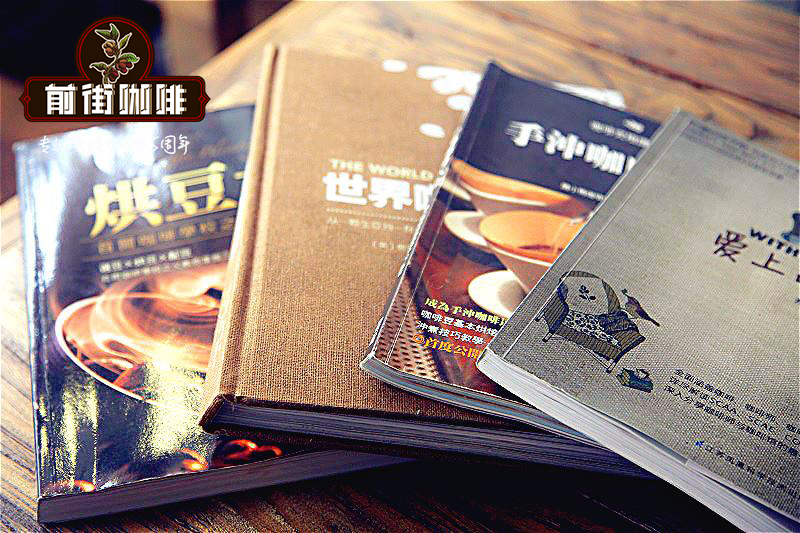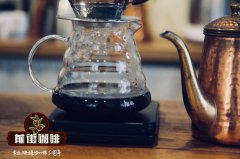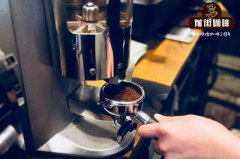Nestle capsule coffee machine official website, what is coffee capsule?
Nestle capsule coffee machine official website, what is coffee capsule?

Many people may have heard the word coffee capsule for the first time and felt that it was confusing and felt like medicine. In fact, this word is translated from English capsule, because each small aluminum platinum space contains coffee powder, so it gets its name. Because the capsule wall is hard and can maintain its original shape at high temperatures, high-pressure water vapor can be injected into the capsule, so that the coffee completely precipitates the espresso with coffee fat under pressure, ensuring the aroma of coffee.
The concept of coffee capsules was born in 1976 for capsule coffee machines. Under the leadership of coffee connoisseur Eric Favre, and after visiting numerous espresso cafes in Italy, Nestle launched the world's first coffee capsule, Nespresso. In 1986, Nestlé officially separated its coffee capsule division.
Coffee capsules can be used together with the corresponding coffee machine to complete the production of espresso coffee with one click, which is very convenient to use. However, this also becomes a disadvantage of coffee capsules, which means that after you buy Nespresso machines, the coffee choices you can choose are greatly limited, you can only buy Nespresso capsules, and you cannot use many other brands of coffee.
At present, Nespresso coffee capsules are divided into two branches, one is Vertuo line (the machine in the above animation belongs to this line), and the other is Original line. Since my coffee is suitable for the original line, this article will not explain Vertuo.
Original Line for models
Original line has many models to choose from, among which Pixie, Citiz, Lattissima (+, touch, or pro) are popular models. Pixie and Citiz machines are not automatic foam machines, you need to buy another foam machine, and lattissima is more convenient, coffee machine and foam machine integrated. Of course, Lattissima is less affordable than Pixie and Citiz.
My family bought this Lattissima+, and I am 100% satisfied with it now. The factory settings allow you to make four types of coffee: small, large espresso, cappuccino and latte. But I am most satisfied with the function is that you can set the amount of coffee, milk, and foam thickness! The first time I used it, it was an eye-opener. It was completely intelligent and customized.
After use, the milk box can be removed and placed directly into the refrigerator. The milk can be stored for up to two days, which is very convenient.
Coffee capsule full range
Coffee capsules are updated every year and even during special holidays, but basically the same is Espresso, Intenso, Decaf, Lungo,Pure Origin, Variations, Limited Edition, and Limited Edition eight series. Decaf is coffee with reduced caffeine content, and only Arpeggio, Ristretto, voluto and vivalto lungo are made into decaf. Decaf will be marked with a small red circle.
Since decaf tastes the same as regular coffee, I won't dwell on it. Below I will comment on the capsules in each series in terms of characteristics, origin, beans, intensity, cup size and how much I like them.
Photo from Instagram@Nespresso
Before describing each series in detail, what you need to know is a few small terms.
Acidity: As the name suggests, it is the degree of acidity that your taste buds taste. In terms of pH, lemon is generally 2.0, milk is 6.5, and coffee (such as breakfast blend) is generally 4.7.
Arabica coffee beans look like this. It grows in Africa and Central and South America.
Bitterness: The taste that is usually felt at the back of the tongue.
Intensity: Depends on the degree of roasting and bitterness, and has nothing to do with caffeine content. Nespresso capsule strength is divided into 13 grades, if we are more familiar with the classification of roast, 1-4 for light roast, 5-8 for medium, 9-13 for dark.
Cup size: refers to the optimal amount of coffee per capsule. Different types of coffee have different cup sizes.
Espresso Series
Livanto
Characteristics: balanced taste, moderate sourness and bitterness, with a hint of caramel taste.
Coffee origin: Central and South America (Costa Rica, Colombia, etc.)
Coffee beans: Arabicas
Intensity: 6
Cup size: Espresso (1.35oz/40ml)
Capriccio
youbeing 9
Low acidity, intensity of 5, mainly coffee beans from Brazil, suitable for espresso (1.35oz/5ml).
Characteristics: low acidity, with cereal taste.
Coffee Origin: South America (Brazil, etc.)
Coffee beans: Arabica and a little Rubusta
Intensity: 5
Cup size: Espresso (1.35oz/40ml)
Volluto
Features: low acidity, especially good smell, with biscuits and fruit fragrance.
Coffee origin: Central and South America (Colombia, Brazil, etc.)
Coffee beans: Arabicas
Intensity: 4
Cup size: Espresso (1.35oz/40ml)
Cosi
Characteristics: Low acidity, balanced taste, with grain and fruit.
Coffee origin: East Africa, Central and South America (Kenya, Colombia, Costa Rica, etc.)
Coffee Beans: Arabicas
Intensity: 4
Cup size: Espresso (1.35oz/40ml)
Intenso Series
Kazaar
Features: heavy roast, bitter and sour taste are particularly heavy, feel can drink pepper flavor. But it's delicious (not my dish, but father-in-law loves it super)
Coffee Origin: South America (Brazil, etc.)
Coffee beans: Arabicas
Intensity: 12
Cup size: Espresso (1.35oz/40ml)
Dharkan
Features: Roasted at low temperature for a long time, so the roast is very heavy, but not too sour, but bitter, with cocoa powder and grain flavor.
Coffee Origin: Central and South America and Asia (Costa Rica and Java)
Coffee beans: Arabicas
Intensity: 11
Suitable cup size: Ristretto (0.85oz/25ml) or Espresso (1.35oz/40ml)
Ristretto
Characteristics: sour bitter very heavy mouth, heavy roast, with citrus flavor.
Coffee origin: Central and South America, East Africa (Colombia and Brazil)
Coffee Beans: Arabicas and a Little Robusta
Intensity: 10
Suitable cup size: Ristretto (0.85oz/25ml) or Espresso (1.35oz/40ml)
Arpeggio
Characteristics: high acidity and bitterness, strong roast flavor, with cocoa flavor.
Coffee Origin: Central and South America (Costa Rica, etc.)
Coffee beans: Arabicas
Intensity: 9
Suitable cup size: Ristretto (0.85oz/25ml) or Espresso (1.35oz/40ml)
Characteristics: Although it is a heavy roast, but the acidity is balanced, the fragrance is pleasant and not rushed.
Coffee Origin: Central America
Coffee beans: Arabica and Robustas
Intensity: 8
Suitable cup size: Ristretto (0.85oz/25ml) or Espresso (1.35oz/40ml)
Favorite:
Pure Origin Series
Indriya from India
Characteristics: Heavy roast, bitter taste especially obvious, with pepper and cardamom spice flavor, I personally do not like.
Coffee Origin: India
Coffee beans: Arabica and Robustas
Intensity: 11
Suitable cup size: Ristretto (0.85oz/25ml)
Loved it:
Dulsao do Brasil
youbeing 9
Characteristics: Smooth on the palate, with a hint of grain aromas, low acidity.
Coffee Origin: Brazil
Coffee beans: Bourbon beans
Intensity: 4
Cup size: Espresso (1.35oz/40ml)
Favorite:
Lungo
Fortissio Lungo
Features: rich flavor, layers, grain flavor is heavier.
Coffee Origin: India, Colombia
Coffee Bean: Arabica
Intensity: 8
Cup size: Lungo (3.7oz/100ml)
Favorite level:
Vivalto Lungo
A blend of Brazilian Arabica coffee and East African Arabica coffee. Low acidity, slightly floral and slightly bitter. The taste is well balanced. The intensity is only 4, suitable for lungo (3.7oz/10ml).
Features: Very mild, although light roast, but rich taste, with a hint of floral.
Coffee origin: Brazil and East Africa (Ethiopia), etc.
Coffee Bean: Arabica
Intensity: 4
Cup size: Lungo (3.7oz/100ml)
Linizio Lungo
Features: Very mild and grainy like Vivalto, but lacking some presence.
Coffee origin: Brazil and Colombia, etc.
Coffee Bean: Arabica
Intensity: 4
Cup size: Lungo (3.7oz/100ml)
Series of Variations
Variations is my favorite of all capsule collections, because it retains not only the mellow taste of espresso, but also the caramel, chocolate and vanilla flavors.
Caramelito
Features: Livanto taste as the base, added sweet caramel flavor, and very smooth, love to die
Coffee Origin: Central and South America
Coffee Bean: Arabica
Intensity: 6
Cup size: Espresso (1.35oz/40ml)
Ciocattimo
Features: Livanto's palate is the base, adding dark chocolate flavor, will return to sweet, like drinking mocha.
Coffee Origin: Central and South America
Coffee Bean: Arabica
Intensity: 6
Cup size: Espresso (1.35oz/40ml)
Vanilio
Features: Livanto taste as the base, add a strong vanilla flavor, add milk and sugar to the taste of coffee vanilla ice cream.
Coffee Origin: Central and South America
Coffee Bean: Arabica
Intensity: 6
Cup size: Espresso (1.35oz/40ml)
Variations Limited Edition
Because I love Variations so much, I must try it out, and this year's limited edition really didn't disappoint me, especially snowball.
Snowball
Photo from Instagram@Nespresso
Features: Livanto taste as the keynote, adding a strong coconut and vanilla flavor, with sweet, really can drink ice cream snowball taste, it is the perfect combination
Coffee Origin: Central and South America
Coffee Bean: Arabica
Intensity: 6
Cup size: Espresso (1.35oz/40ml)
Orangette
Photo from Instagram@Nespresso
Features: Livanto taste as the base, with orange peel and chocolate flavor, sweet and sour balance is very good, but also a must try taste!
Coffee Origin: Central and South America
Coffee Bean: Arabica
Intensity: 6
Cup size: Espresso (1.35oz/40ml)
Liquorice
Features: Livanto taste as the base, but also a balanced taste is very good, but because of the licorice (star anise) taste, I personally do not like the other two so much.
Coffee Origin: Central and South America
Coffee Bean: Arabica
Intensity: 6
Cup size: Espresso (1.35oz/40ml)
Favorite:
The above coffee can be converted into macchiato, cappuccino, latte, mocha, matcha latte and other coffee drinks. You can also prepare a cup of ice cream yourself and pour it into the freshly made espresso to make an affogato! (Coffee recipe later)
Photo from Instagram@Nespresso
I have to mention the cost performance problem
Some people complain that even if they can afford coffee, they can't afford capsules. I personally don't think so.
First of all, coffee capsules are not expensive compared to home-made coffee. A Starbucks k-cup brewed coffee costs $0.50 to $1. Capsule coffee costs between $0.7 and $0.8 each, and there are often discounts.
Second, home-made capsule coffee really beats the coffee drinks at many chain coffee shops outside by several blocks. A medium latte on the outside costs between $3 and $6, and you can drink it at home for a third of the price. I think it's worth it.
summary
When it comes to choosing coffee capsule flavors, I personally think that heavy coffee addicts (more than 3 cups of black espresso per day) will definitely like Intenso series. However, for coffee lovers or new coffee drinkers, I recommend coffee with an intensity of less than 6, especially the Variations series. I wish coffee lovers delicious coffee every day ~
Important Notice :
前街咖啡 FrontStreet Coffee has moved to new addredd:
FrontStreet Coffee Address: 315,Donghua East Road,GuangZhou
Tel:020 38364473
- Prev

Different types, efficacy and uses of hand-made coffee filter cups on the official website of diffuse coffee
Different types, functions and uses of hand-made coffee filter cups on the official website many friends like to stroll around the Paris Cafe. I not only want them to drink the best coffee, but also make some stories about coffee and coffee utensils on TTP. Everyone said that the process was really enjoyable, because they never saw or heard about it in the coffee shop outside.
- Next

How much do you know about Italian brands on Delong coffee machine official website? Aristocrat of La Marzocco coffee machine
Delong coffee machine official website, how much do you know about Italian brands? Rolls-Royce Italians in the world of La Marzocco coffee machines are probably the most enjoyable people in the world, and they are a group of people who enjoy life to the extreme. They love coffee, and in order to make the best coffee, they have painstakingly studied today's protagonist-- La Marzo, which is known as Rolls-Royce in the coffee machine world.
Related
- Detailed explanation of Jadeite planting Land in Panamanian Jadeite Manor introduction to the grading system of Jadeite competitive bidding, Red bid, Green bid and Rose Summer
- Story of Coffee planting in Brenka region of Costa Rica Stonehenge Manor anaerobic heavy honey treatment of flavor mouth
- What's on the barrel of Blue Mountain Coffee beans?
- Can American coffee also pull flowers? How to use hot American style to pull out a good-looking pattern?
- Can you make a cold extract with coffee beans? What is the right proportion for cold-extracted coffee formula?
- Indonesian PWN Gold Mandrine Coffee Origin Features Flavor How to Chong? Mandolin coffee is American.
- A brief introduction to the flavor characteristics of Brazilian yellow bourbon coffee beans
- What is the effect of different water quality on the flavor of cold-extracted coffee? What kind of water is best for brewing coffee?
- Why do you think of Rose Summer whenever you mention Panamanian coffee?
- Introduction to the characteristics of authentic blue mountain coffee bean producing areas? What is the CIB Coffee Authority in Jamaica?

